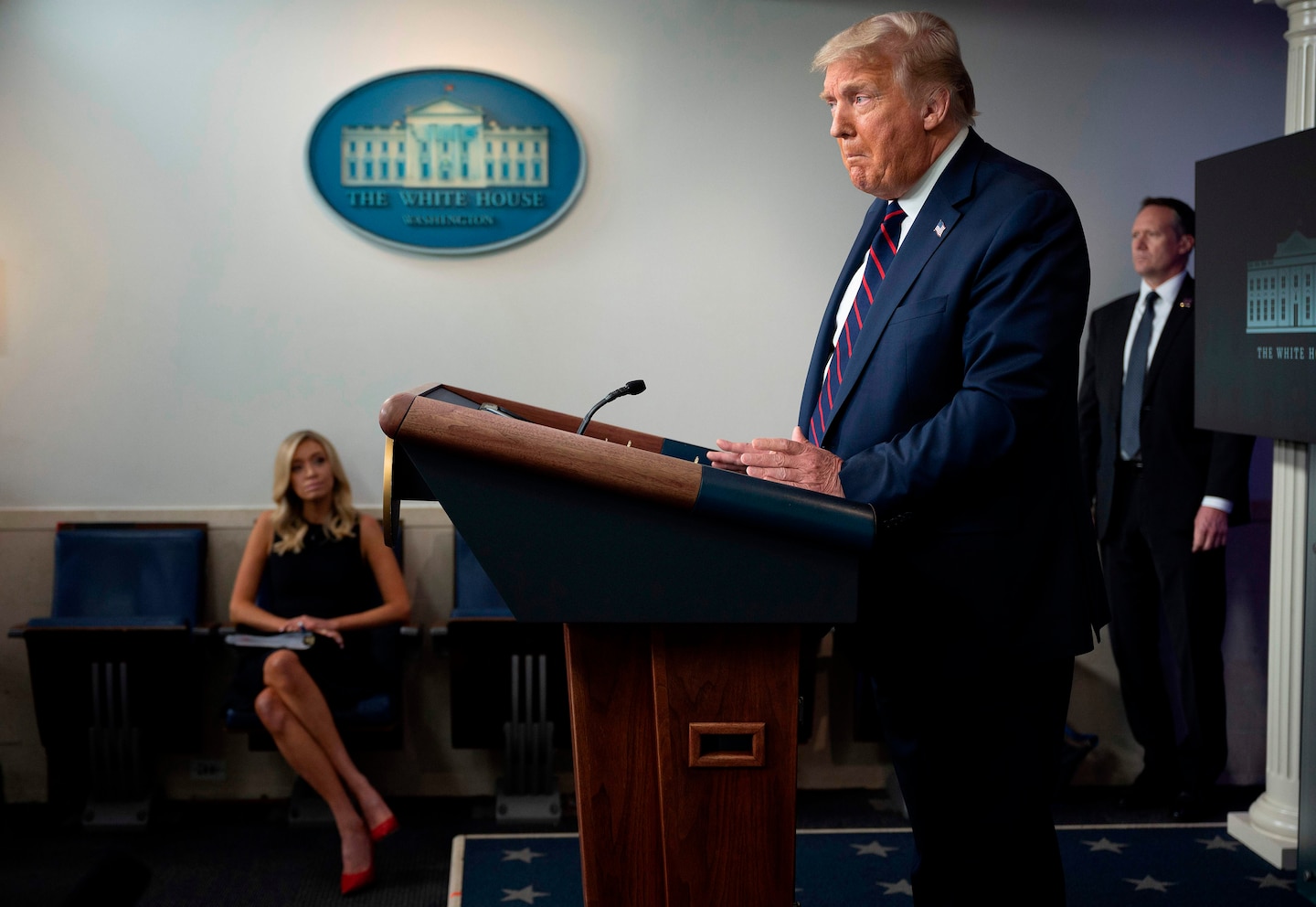How we know the pandemic will get worse

He followed that up with a less accurate statement, claiming if you look over the world … it tends to do that.” Actually, many countries managed to snuff out an initial surge in cases and are managing more isolated outbreaks as they emerge.
But again: It is both true that the spread of the pandemic has gotten significantly worse over the past month and that, measuring by Trump’s preferred metric — the death toll — things will decline further.
Over the immediate term, there actually has been a plateau in the daily average of new confirmed cases. It’s too soon to say whether that shift will hold, but over the past four days, the seven-day average of new cases has hovered around 63,000 — three times what it was in early June but at least not continuing its recent upward trend.
The imminent crisis, though, is displayed in the graph at right. For the first time in more than a month, the country recorded more than 1,000 deaths Tuesday, and the seven-day average in new deaths from covid-19, the disease caused by the virus, climbed to nearly 800. The last time it was that high was June 5, right before the number of new cases began to surge.
As those new cases increased, Trump increasingly focused on the lower death toll as a bit of good news. In particular, he and his administration focused on the mortality rate, the ratio of deaths to cases. That has, in fact, plunged in recent weeks — as a result of the ballooning number of cases that serves as the denominator for the calculation.
As we’ve pointed out, though, no matter how effective coronavirus treatments have gotten in recent months, some of those who contract the illness will die. More cases, then, means more deaths. That the daily death toll had faded as cases were surging wasn’t, as the White House claimed, a mark of overwhelming success in addressing the pandemic but of the lag time between infection and fatality.
Data from the Covid Tracking Project allows us to see what that lag looks like in practice. As we wrote last week, there has been a multiweek lag nationally between when new infections began to climb and when new hospitalizations and deaths began to rise. The lag time varies, but barring some data anomalies, it has taken about two weeks for the number of hospitalizations to increase after cases began to rise, and another two weeks for deaths to begin to rise as well.
That’s a four-week lag time. This is tricky to measure for a lot of reasons, including wide variability by state. If we look at aggregated seven-day totals of each metric in states that have had recent surges, you can see how, relative to the point at which cases began to rise, the increase in deaths happened at various points afterward.
If we assume, though, that there is about a four-week lag time, we see why things will soon get worse. On June 21, the seven-day average of new cases had increased to nearly 28,000, up from about 20,000 a few weeks earlier. Then the average number of new cases spiked to the point we’re at now.
If we adjust our mortality rate for that lag, the downward trend trumpeted by the White House mostly vanishes. On average, since June 1, new deaths have been an average of 2.9 percent of the number of new cases four weeks prior. It’s varied a bit, but in a narrow window.
If that percentage were to hold over the short term, the number of new cases recorded over the past four weeks will lead to an average of about 1,500 new deaths per day over the next four weeks. That would mean more than 40,000 additional deaths by the end of August, an increase of 30 percent over the current total.
This is a back-of-the-envelope calculation and not a forecast or a model. Hopefully, the death toll will be far lower, and the average number of deaths relative to cases four weeks earlier will decline, as it did over the course of June.
As we’ve repeatedly pointed out, though, the idea that the number of deaths from the virus would keep heading down indefinitely, a trend implied by the president’s past statements, was always unlikely to the point of near impossibility. Acknowledging the reality of what’s likely to happen over the short term is a change, and a positive one.
And hopefully, past isn’t prologue. Hopefully, the number of new deaths trends back down sooner rather than later.






